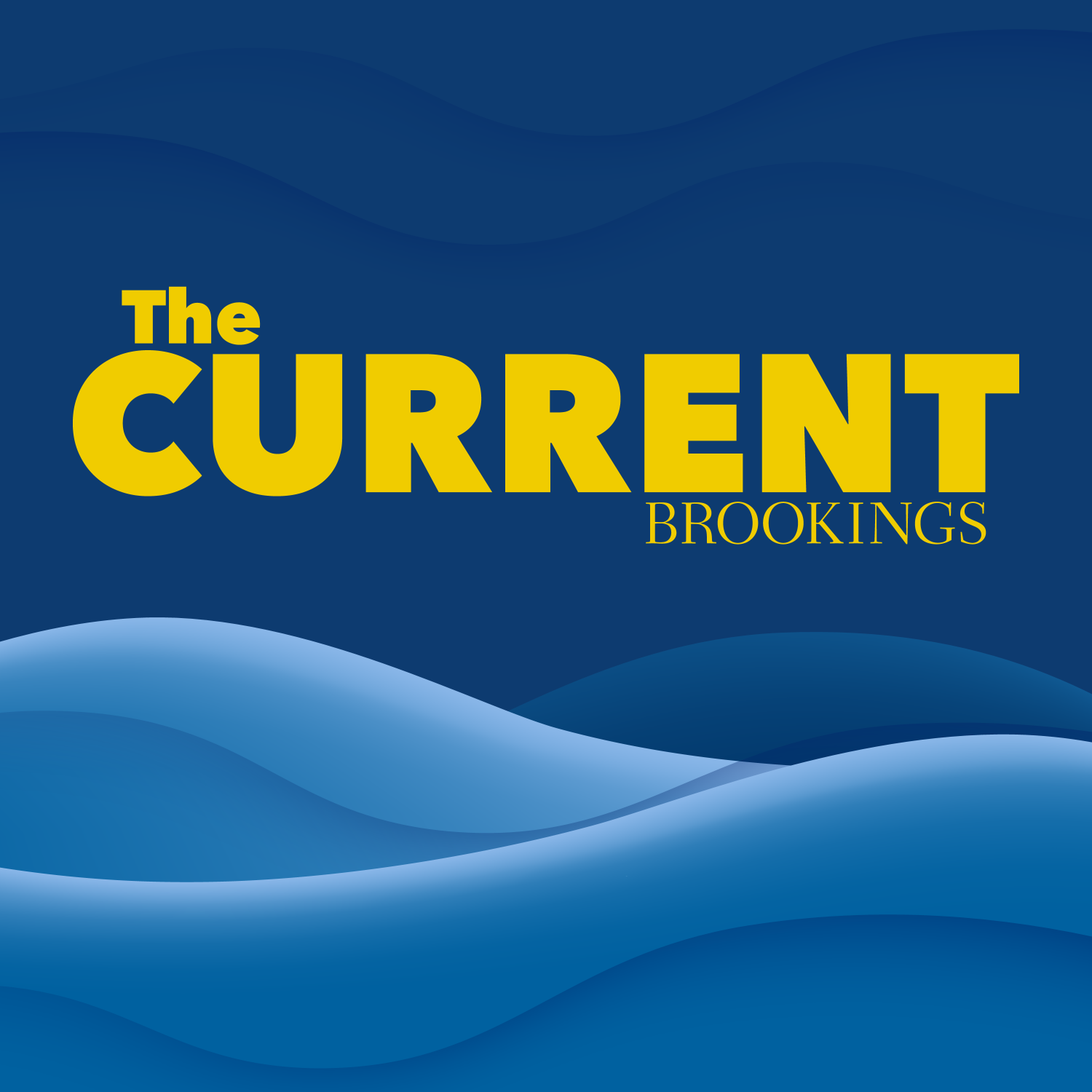This past week, leaders of the “Quad” – U.S., India, Japan, and Australia – met for the first time as a group to put forward a positive agenda and address Chinese behavior in the Indo-Pacific region. Tanvi Madan evaluates what the Quad summit signals about the Biden administration’s regional strategy, and the significance of the newly announced COVID-19 vaccine initiative.
Related material:
Listen to Brookings podcasts here, on Apple or on Google podcasts, send email feedback to [email protected], and follow us at @policypodcasts on Twitter.
Thanks to audio producer Gaston Reboredo, Chris McKenna, Fred Dews, Marie Wilken, and Camilo Ramirez for their support.
TRANSCRIPT
PITA: This past week saw virtual meetings between the leaders of the U.S., Japan, India, and Australia, known as “the Quad” – the Quadrilateral Security Dialogue. With us to examine the outcome of this latest meeting and the role of this group in U.S. regional engagement is Tanvi Madan, senior fellow and director of the India Project here at Brookings. Tanvi, thanks so much for talking to us today.
MADAN: Thanks for having me on the podcast, Adrianna.
PITA: Maybe you can start by giving us a little bit of background about where this particular grouping came from, why did they form. What’s the purpose of the Quad?
MADAN: So, the Quad initially came together organically after the 2004 tsunami in the Indian Ocean region, where these four countries’ diplomats and military officials coordinated to respond to the tsunami. From there they had something called the tsunami core group. That later, in 2007, turned into a meeting in May 2007 on the sidelines of a meeting in Asia where working-level officials of the four countries met as part of a quadrilateral dialogue framing. Then that year they did a military exercise together along with Singapore in the fall of that year. That was what we call Quad 1.0, but it met an early demise fairly quickly for various reasons that I won’t go into here.
We then saw this Quad revived under the Trump administration in November 2017 at the working level. We since saw it expand to the ministerial level. Then when the Biden administration came in, there was some question about whether they would continue with this platform of these four countries, four democracies, who had shared – if not identical – visions in the Indo-Pacific region, and were kind of a coalition of the willing and capable. Would the Biden administration continue with the Quad? They have not just embraced the Quad, they have enhanced it. There was a ministerial meeting less than a month ago in mid-February, then this first-ever leaders’ summit of the four democracies’ leaders on Friday. What they have basically laid out is that they have a common vision, they are a flexible grouping of like-minded partners who are advancing a common vision in the region, in the Indo-Pacific region, and they will also work with other like-minded partners, other like-minded so to speak.
The one other thing I will say is that while they do not mention in documents or in statements, the unspoken, or as I call it, the Voldemort of the Quad, is China. Because one thing that is the case is that while this is not about containment of China – they have put forward a positive agenda and a positive vision – there is a sense in all four countries that China, particularly its behavior, has been challenging the rules-based order in the Indo-Pacific, whether that’s through unilateral changes to the status quo, whether that’s through economic coercion, whether that’s through impeding freedom of navigation. This group has come together because they have the capabilities and they have had the will to form this coalition, this grouping, and they have laid out an agenda of areas where they will consult, coordinate, and cooperate.
PITA: I’m definitely going to come back to the China question in just a moment, but first I want to talk about how significant is it having these four leaders meeting together for the first time? Is this about the Biden administration demonstrating their renewed engagement with these partners? Or is this a sign that the Quad itself is here to stay as particular vehicle for regional cooperation and coordination?
MADAN: It was important for a few different reasons. One, I think it was important because it highlights that the Biden administration is not going to take its foot off the pedal, so to speak, but it’s going to continue to move forward with a focus on the Indo-Pacific, that it will prioritize this region. It’s a way of reflecting also and conveying to partners and allies even beyond the Quad countries that it’s committed to working with other countries as it seeks to both take advantage of opportunities and meet challenges in the region.
I think it’s also important because for the Quad itself, this is the first real change in government we’ve seen since it was revived in November 2017. In Japan, there was obviously a change in the Cabinet, but it wasn’t quite a change in parties – one party taking over for the other. So, the fact that the Quad has survived this first transition between different parties in a country is also good.
I think the third reason it’s significant this took place is that once you’ve slowly moved your way up to a leaders-level summit, it tends to have more staying power. And I think that was one of the messages that you heard from the four officials from the four countries, that the Quad is here to stay. And believe it or not, that was not a given a couple of months ago. Keep in mind that until about two months ago, neither India nor Japan officially would even use the word “Quad,” as they used to refer to them as consultations.
I’ll say one final thing about why this was significant. There’s been some concern that India has been reluctant to move the Quad forward, and there was concern that if its ongoing boundary crisis with China reached a sensitive point, or if there were negotiations with China, that India would slow-roll its cooperation with these like-minded partners, and the fact that it agreed to both a ministerial in February and a leaders-level summit this past week, even though they’re in the middle of sensitive negotiations with China to disengage at the border, is a good sign as well, and of significance.
PITA: There were a couple of announcements out of this leaders’ meeting: some partnerships and projects that the Quad would be putting its attention to. There’s particularly a partnership on vaccine production for India, as well as a couple of other working groups. What can you tell us about these projects that were announced?
MADAN: I think the big one really was the vaccine initiative, the Quad vaccine initiative that the four countries put together, for a few different reasons. One, I think it helps put forward this idea that the Quad has a positive agenda. This takes on criticism particularly from China, but also some concerns amongst other countries in the region like South Korea, or some other Southeast Asia countries that this is just an anti-China bloc. So this says, look, this is a grouping that is bringing forward solutions to problems that the region has and it is dealing with those. So, I think that positive agenda is well.
Second, it is proof of concept for the Quad. Some have dismissed it as merely a meaningless talk shop that lacks purpose. Here is an example through this vaccine initiative of the countries pooling their capabilities and resources, using their comparative strengths; also burden-sharing. It’ll have U.S. technology and IPR, it will be U.S.-Japanese financing, to some extent Australian. Indian manufacturing capacity is the largest producer of vaccines in the world and that capacity will be expanded, and it will bring together the Australian distribution capacity. And it’ll particularly target the Southeast Asian countries, but the Indo-Pacific as a whole as well.
I’ll mention two other positives of the vaccine initiative: one that is the countries emphasize that they will work with existing institutions and facilities, whether that’s the WHO or the COVAX facility, not work around existing institutions, something that they accuse China of doing, which is undermining these international institutions. So, I think that’s significant as well. And then finally, the vaccine initiative is important because they’re setting up a working group which will bring together people from across their governments and private sectors and on the R&D side, their scientists, etc. It broadens the constituency for this kind of grouping.
There were two other working groups set up. One for critical and emerging technology, which will also look at facilitating cooperation on international standards and technologies, talking about supply chain resilience, etc., as well as one working group on climate change. So those are the two other areas.
The one other outcome which wasn’t declared but did actually happen was, this Quad meeting gave them a chance to update each other on their perceptions and approaches toward China.
PITA: On that point, I’ll you to talk a little more explicitly about China’s view of this group as sort of a NATO of the Indo-Pacific – a group whose primary motive is opposition to China’s interests. You have already talked a fair bit here about the more positive purposes of this group. Can you talk about that balance between their other goals versus an implicit understanding of them being as a counterweight to China?
MADAN: So I think what the group itself has been trying to do is to try to work together to shape Chinese behavior, to deter it from taking what they see as malign actions, deter them from coercing countries, and when they do target countries, to show solidarity with each other and mitigate those consequences. They do see China, and each of them has been targeted by China in the last few years in different ways and had increased concerns about China. So, would the Quad exist without concerns about China? I doubt it, at least not in this form. So, when people say this is not about China, I would say it is not just about China, but China has been bringing these countries together. China criticized the Quad and says, “why does it exist?” – well, it should look in the mirror, because its own behavior is one of the reasons, a key reason, this grouping exists, to ensure, as they say, a rules-based order in the region, a free, open, healthy, prosperous region where countries follow the rules and don’t coerce other countries but give them choices.
China has tended to oppose this group. It called it most recently “a small clique.” They have said, in previous guises, they have talked about it destabilizing the region. But they yo-yo. At times, they also say it is irrelevant. Wang Yi, the Chinese foreign minister, back in 2018 when he was talking about the Indo-Pacific approaches of these four countries, said it would dissipate like sea foam. Well, it hasn’t dissipated, and we once again are seeing Chinese criticism of the Quad over the last few days of this Quad summit. It’s taken two forms: one to say either that this will go nowhere, that the countries have too many differences amongst themselves and each of their relationships with China is too important, that this grouping won’t go anywhere. But the other thing that you’ve seen is China actually try to target individual Quad countries, and to assume a sort of wedge strategy, to try to play divide and rule: suggesting to India it shouldn’t proceed with the Quad, for instance, because it will be used as a pawn or become collateral damage, or, as one Chinese outlet put it, that it will become cannon fodder for the other countries. So, you have seen objection from China; you have seen this is a group that gets under their skin. But on the other hand, China itself has formed a number of, as they call them, small cliques, including the Brazil-Russia-India-China-South Africa grouping, the Shanghai Cooperation Organization, the Asian Infrastructure Investment Bank, not to mention with the Europeans the 17+1 grouping. So, they are no strangers to small cliques as well.
PITA: In addition to the meeting of the Quad, U.S. Secretary of State Blinken and Defense Secretary Austin will be traveling to Japan and South Korea this week, and then Secretary Blinken will be meeting with his counterpart, Chinese Foreign Minister Wang Yi in Alaska. How should we take these meetings as a sign or a signal about the Biden administration’s broader goals for the region and U.S. engagement therein?
MADAN: I think if you look at the pattern we’ve seen since the administration took office, you saw President Biden make phone calls to the Indo-Pacific allies and partners ahead of his call with Xi Jinping. You saw the same with Secretary Blinken as well as National Security Advisor Jake Sullivan. They have prioritized allies and partners, and they’ve done the same with this upcoming Anchorage meeting. Before meeting their Chinese counterparts, they’ve set up a pretty active set of meetings touching base with allies and partners, European and Asian, including this Quad meeting, which helps set them up for this meeting. They’ve made clear since the beginning that they want to go into negotiations or discussions with the Chinese from a position of strength, and that’s been defined as shoring up alliances and partnerships, as well as strengthening the U.S. at home and trying to shore up and point out that the U.S. is recovering, for example, from COVID. I think with some of the vaccination numbers, with the COVID stimulus bill being passed, as well as coming off this Quad summit, I see this meeting as going into this meeting having shored up and built up some leverage, and at least going to the table with the Chinese saying, “we’re not on the decline; we have friends who are with us, and we’re going to work with them.” What all this has signaled to me, what they’re suggesting – we’ll see how the meeting actually pans out – what they’re suggesting is, this administration is not going to have a China policy from which Indo-Pacific or Asia policy flows, but they’re going to have an Indo-Pacific or Asia policy within which China policy sits. So that’s the signal that I see in the way this was structured and how this is playing out over the next few weeks and months.
PITA: All right. Tanvi, thank you so much for talking about this with us today.
MADAN: Thanks, Adrianna.
The Brookings Institution is committed to quality, independence, and impact.
We are supported by a diverse array of funders. In line with our values and policies, each Brookings publication represents the sole views of its author(s).







Commentary
PodcastWhat does the Quad summit signal for U.S. engagement in the Indo-Pacific?
March 16, 2021
Listen on
The Current Podcast